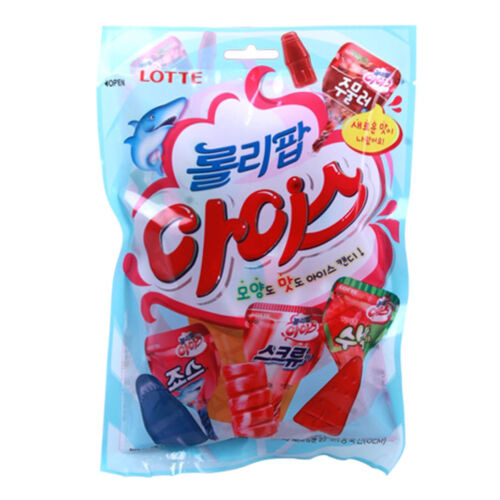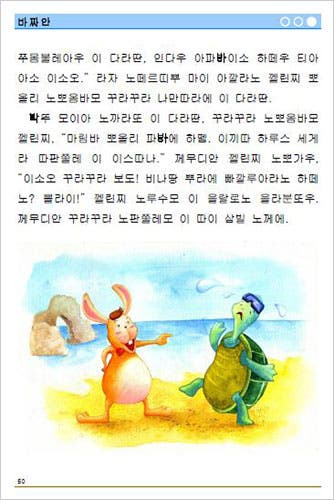Would it be overdramatic of me to say that learning a certain writing system has exponentially increased my quality of life (even though I’m not actually a speaker of said language)?
Well, call me a drama queen because I’m saying it anyway. That writing system is one of my favorites of all time: Hangul, or the phonetic alphabet of Korean.
And if you don’t believe me, here’s what I’ll suggest. Give yourself a 30-minute break to sit down with some easy Hangul learning materials and a nice cup of coffee. Then run to your nearest Korean supermarket and start reading all the labels you can find. I can’t even express the personal satisfaction that you will feel from doing this.
Here’s my internal monologue every time I shop at Hmart. “Oh, I wonder what this product is. Lol… Li… Pab… A… I… Seu. LOLLIPOP ICE! IT’S A LOLLIPOP ICE!”
Trust me. There’s nothing like it.
Clocking in at 19 consonants and 21 vowels, Hangul makes reading Korean really easy. Consonant-vowel combos are packed into little syllables, and although there are a few nuances you’ll have to memorize for sound changes, it’s really quite straightforward.
Hangul is a fairly new writing system (introduced in the 1440s), and is now a great source of national pride for Koreans. It is loved for its simplicity and accessibility, especially as Korean had previously been represented through meaning-based writing in Chinese characters.
Hangul has had a tumultuous past. In the 16th century, elites tried to bring back Chinese characters, and Hangul fell out of use until a resurgence in the 19th century. Under Japanese colonial rule, the Korean language was heavily restricted, but covert use of Hangul remained a discreet source of Korean national pride. So Hangul seems to have beaten the odds.
The forms in Hangul are also known for their scientific associations, reflecting nature and human anatomy. For example, the velar consonants ㄱ [k] and ㅋ [kʰ] depict a side view of the back of the tongue raising towards the velum, or soft palate. Bilabial consonants are written to reflect the movement of the lips: ㅁ [m] represents the lips in contact, ㅂ [p] points to a plosive, and ㅍ [pʰ] adds a little puff of aspiration.
This writing system is so beloved that there is even an annual celebration dedicated to Hangul: on October 9th, Hangul Day is observed in South Korea (and on January 15th in North Korea). In the holiday’s official legislation, Hangul is lauded for its originality and scientific superiority. And hey, I’m not arguing with them. They have a lot to be proud of.
Who Does Writing Belong To?
Hangul is very new, and in the grand scheme of human existence on earth, writing is an inherently manmade and incredibly recent development.
While writing may seem as old as time, it’s not — and there are no hard and fast rules about who gets to use what script, or what alphabet belong to who. For languages that have been primarily oral for centuries, creating a script for a language requires many layers of intentional planning and decision-making.
So although Hangul derives from two words — “Han” meaning Korea, and “geul” meaning word — is Hangul exclusive to the Korean language? Or could another language theoretically adopt Hangul as their own writing system?
The Hangul Experiment: Cia-Cia
Enter Cia-Cia, a language of Indonesia located on the Buton island in Southeast Sulawesi province. As of 2010, there were 104,000 speakers, but it’s been on the decline since then, classified as threatened language. At one point, Cia-Cia was written with an Arabic script. But that is no longer in use, and Cia-Cia has primarily remained an oral language.
In 2008, a few Korean linguists specializing in Indonesian languages decided to try something new: use Hangul to represent the written form of a non-Korean language. They signed a deal with local officials in Baubau offering to create Cia-Cia textbooks using Hangul (plus a $500,000 Korean cultural center and the promise of economic development).1 By July, a Baubau teacher (who had been trained at Seoul National University) was ready to teach Cia-Cia to 50 third-graders in Baubau, using textbooks written in Hangul.
Sounds promising, right? So did it work?
The short answer is: not really (and there are a whole host of reasons why). Hangul writing in Cia-Cia still exists to an extent today, but a Latin script is mostly being used (the government claims that this is for the sake of national unity, as the majority of Indonesian languages are represented in Latin script).
Furthermore, the local education system puts a big emphasis on Arabic and the teaching of Islam; by local law, students need to be able to read the Quran in Arabic before moving on to junior high.2 So learning to write in Cia-Cia isn’t necessarily a priority for young learners (not to mention older individuals, who have gotten by for decades without a standardized Cia-Cia script).
Another difficulty that was cited was that of cultural differences, but it's not too clear what exactly this means. One of the two Baubau teachers who were to be trained in Seoul quit the program after a few weeks. A Korean instructor refused to get into specifics about said cultural differences in order to not offend the tribe.3
Finally, both the Korean and Indonesian governments fell short in providing much-needed financial support for the program. So despite a concerted (and perhaps a little overzealous) effort to spread the joy of Hangul to speakers of another language, it ended up falling short.
It's clear that what it really came down to was money and politics (what’s new, right?). Baubau officials were hopeful at the prospect of forging a diplomatic and economic relationship with Seoul — perhaps more so than Seoul was prepared to provide. Critics of the Hangul project argued that Korea's main interest really seemed to just be exporting Hangul, with little meaningful plans to forge a deeper cultural and economic connection with the community that would be impacted.4
This is an interesting thought to consider — can a writing system be an export? What would it take for a new writing system to be popularized across different languages? The case of Hangul and Cia-Cia helps us take a closer look at some of the potential complications.
The Future of Hangul
So does Hangul have the potential to be used as a writing system for non-Korean languages? In the end, I don’t have the answer. Some Korean linguists have expanded the Hangul system to include more phonemes to accommodate new languages, with the hope of Hangul becoming the new International Phonetic Alphabet (IPA). But it hasn’t really caught on in any meaningful way.
And from this example of Hangul and Cia-Cia, it’s clear that the development of a writing system is not as black and white as it seems. It’s inherently tied to identity, politics, and the ideologies of those using the languages. So it’s hard to say whether or not Hangul will ever successfully make its way over to another language — regardless of how innovative a system it is.
But hey, even if Hangul never transfers over to non-Korean contexts, don’t let that stop you from incorporating Hangul into your notebook doodles or reading all the snack food labels at Hmart. I’ll be over by the ice cream.
Thanks for reading this week’s newsletter! I would love to hear your thoughts in the comments below. What do you think of Hangul if you’ve learned it? And are you inspired to give it a try?
If you haven’t subscribed yet, would you consider doing so? It helps me out a lot and I’m always thrilled to connect with new subscribers.
See you next Tuesday!
https://www.nytimes.com/2009/09/12/world/asia/12script.html
https://www.wsj.com/articles/SB125261759118600981
http://www.koreatimes.co.kr/www/news/nation/2012/10/113_121766.html
https://english.chosun.com/site/data/html_dir/2012/10/09/2012100901201.html?related_all









I absolutely love the Hangul alphabet! As you said, it's incredibly easy to learn and very satisfying to read. I still remember the first time I tried to read the last word of message I received in Korean (I didn't speak a word at the time). I was hooked when I got what 굳바이 meant. (I'll leave it like this for your own pleasure 😉)
The case of Cia-Cia is also quite interesting. I personally think it'd be possible to "export" an alphabet but I think it'd first need to go through a situation like this one and could be revived later as people notice it's better than what they currently use (if that's the case). After all, if there are still signs using Hangul, it's a vestige that may get people curious later on.
Your piece also reminded me of another version of this I found earlier this year: Taiwanese Hangul created for Taiwanese Hokkien in 1987. The idea of using a mixed version feels more like a hassle than using either script though.🤭
Here's the Wiki page if you're curious: https://en.wikipedia.org/wiki/Taiwanese_Hangul
I know nothing about Korean and Hangul, but I recently learned the Greek alphabet and it was a real help in Athens. It was a lot of fun reading the signs and finding that I could understand more than I thought.